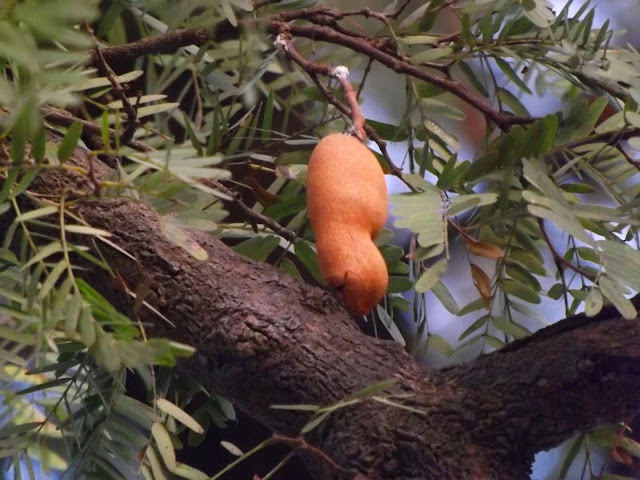Tetul, Tamarind, Tamarindus indica
Tetul or Tamarind (Tamarindus indica, family: Leguminosae) is a large evergreen tree, with spreading canopy about as wide as the tree's height. It can get a height of 30 m but is usually less than 20 m. It is native to tropical Africa and become naturalized in the tropical world. The tree is grown in Bangladesh as ornamental tree, and for the edible pods which pulp is extremely sour in taste.
Leaves are compound; leaflets are oblong, 10-18 pairs, small, linear, 0.4-3.2 cm long and 0.3-1.1 cm wide.

Tamarind trees are slow growing but long lived, with a 200-years life span.
Flowers borne in small drooping clusters. Buds are red, sepals 5, yellow on the inner side. Petals 5, unequal, 1-1.3 cm long, pale yellow or cream-colored, with red venation marks.
The plant is propagated by seeds.
Fruits are 12-15 cm long, and 2-3 cm wide, skin hard but brittle, brown. The pulp contains 8-10 chocolate-colored seeds.
Tamarindus indica is used in the treatment of piles, cold, sneezing, urinary pain, dysentery, spraining, sore and diabetes. Fruit is a big source of Vitamin-C. Tamarind pulp is used to prepare a kind of drink in Latin America.







Comments
Post a Comment